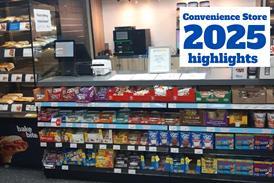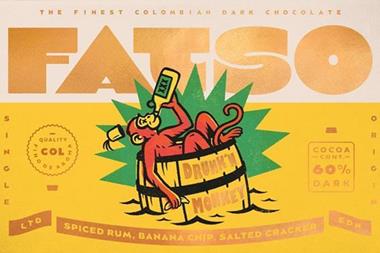Massive high street competition and tight regulation make OTC medicines a challenging market, but it’s one where the convenience retailer could have an advantage.
Despite the government’s policy to encourage self-medication and the move to allow more medicines to be sold outside of pharmacies, these appear to be tough times for the over-the-counter (OTC) medicine industry.
According to figures from the healthcare industry’s trade association, the Proprietary Association of Great Britain (PAGB), the market stood still in 2004 with below-inflation sales growth of just 0.9%, making it worth £2bn. “Issues continue to be downward pressure on prices from retailers and wider retailer and generic product competition,” says PAGB director of legal and regulatory affairs Helen Darracott.
The effect of this pressure on price may well have contributed to Boots The Chemist’s lacklustre third-quarter results announced in January, which showed overall sales had dropped by 0.7%.
If the health and beauty giant is struggling, what is the prognosis for the OTC market overall and for convenience retailers? According to Robert Gregory, retail analyst at Planet Retail, its prospects look healthy. He believes c-store retailers could well benefit from the changing dynamics on the high street.
Once the effects of the Pharmaceutical Price Regulation Scheme, which was introduced in January 2005 and reduced the price of branded medicines by 7%, are taken into account, Boots’ underlying like-for-like sales were actually up 0.3%, so things aren’t quite so bad for the retailer as its results initially suggest.
And although increased price competition may be having a negative effect on the market, this doesn’t necessarily hurt the convenience channel. The most likely losers will be the specialists, says Gregory. “Why would consumers make a dedicated trip to a specialist where the price is probably going to be higher? These stores either have to offer something unique or which the non-specialists cannot - such as premium private labels, advice from experts, or free health tests,” he says.
In contrast, convenience outlets can take advantage of the special nature of OTC purchases. “For starters, most OTC products aren’t planned but distress purchases. They are not usually bought in advance or something that people stock up on,” says Gregory. This makes the channel an important one for goods such as painkillers and cough and flu medicines.
“There is a general trend towards c-stores offering a comprehensive range in order to compete harder against larger supermarkets - offering OTC products fits this trend. If a c-store doesn’t sell the goods, it will lose business to other formats,” warns Gregory.
Despite the multiples’ best efforts to sensitise consumers to price, regulation of the OTC category acts as a brake on aggressive promotional activity, points out Katherine Brown, marketing director at Wyeth Consumer Healthcare, owner of the Anadin brand.
“The regulators recently upheld two separate complaints made against retailers for marketing analgesics using volume promotion techniques such as ‘buy one get one free’. The PAGB discourages retailers from using volume promotions on the sale of analgesic and cold remedies. The principle is that consumers shouldn’t be encouraged to buy more medicines than they actually need. Promotions linking medicines with other products are also discouraged,” she says.
That’s not to say OTC is a marketing-free zone. Brands are king in this category and they’re well supported by their owners. “PAGB market data tells us there is a significant level of brand loyalty by consumers. These consumers don’t purchase if they cannot see their favoured brand, so knowledge of the leading brands is crucial. Manufacturers invest heavily in their brands through advertising so keep an eye on what’s being advertised,” says Darracott.
Pfizer’s Sudafed Vapour Plug campaign and TV support for Beechams All in One and Beechams Flu Plus hit the airwaves at key OTC trading periods, helping keep the brand - and the category - front of customers’ minds.
Pfizer also initiated a consumer survey supporting its Benylin cough medicine brand. It found, not surprisingly, that commuters are fed up with coughers disturbing them on their daily journey. As a result, it launched a ‘cough-free zone’ onboard the London Fenchurch St to Shoeburyness line - an innovative idea that will no doubt help drive sales of its recently launched Benylin Chesty Coughs Non Drowsy sachets.
This is a highly seasonal market and so ranges do need adjustment over the year, but don’t be caught out. GlaxoSmithKline’s Cold and Flu in Grocery 2005 report showed that while sales of cold and flu products peaked in mid-December they also continued into April and May.
Richard Saunders, national account manager convenience at Reckitt Benckiser Healthcare UK, whose portfolio includes the Lemsip, Bonjela and Gaviscon brands, says that while products such as hay-fever remedies should be kept to the peak selling periods of June and July, others need to be retained year-round. “After pain relief, winter remedies is the second largest healthcare category, so cold and flu remedies should be on sale annually. Although sales peak in November to February, 35% of annual sales are made in summer months. In fact, cold and flu remedies have the same value sales as hayfever remedies in the summer months.
Heartburn remedies should also be stocked all year round.”
David Blair, marketing development manager at Menzies Distribution, agrees products such as cold and flu remedies are year-round sellers. The company recently launched the Health Shelf - a complete retail solution for OTC medicines that’s free to c-store retailers when they buy the initial stock. It comprises an acrylic display unit containing best- selling OTC brands such as Nurofen, Benylin, Lemsip and Gaviscon.
Blair says the unit can offer a 28% margin and top-up stock is available across the range for next-day delivery. The unit can also help retailers decide what to stock, and when.
“The Health Shelf range won’t remain static and we will periodically review the featured products. So for the summer we may well substitute a cold or flu product for a hayfever product,” says Blair.
The unit aims to help retailers maximise range and improve presentation. “We are working with a major pharmaceutical distributor and feeding off their expertise in determining the range of products to offer. Our range represents the top-selling OTC lines in the UK market by value. We opted for value as the key criterion rather than volume so that we could help maximise profits for retailers,” says Blair.
Each shelf within the unit is clearly labelled to aid product placement and it comes with laminated fact sheets for each product to help retailers answer any consumer queries.
Effective merchandising is essential in OTC to help the consumer navigate the fixtures, says Debbie Whitworth, category development manager at Crookes Healthcare. The company, which owns leading brands such as Nurofen, has devised a number of sales aids including a retailer point of sale envelope which was recently mailed to Convenience Store readers.
“Consumers generally don’t understand the difference between pharmacy and general sales licence medicines (GSL). The move of some products to GSL status enables consumers to buy healthcare in a wider number and variety of outlets, thereby improving convenience and accessibility of these products. Our initiative is ideal to reach the vast and fragmented convenience sector. It focuses on the key healthcare brands Nurofen and Strepsils and offers wobblers and posters for both, as well as an open/closed door sign. We have also supported the launch of Nurofen for Children 4s with bus stop ads, posters and shelf- edge strips for the cash and carry sector, as well as wobblers for the retail sector,” says Whitworth.
GlaxoSmithKline’s report emphasises the importance of off-shelf displays during key selling months to help encourage impulse sales, avoid out of stocks and to tempt consumers to trade up to more premium products. Beacon brands should be kept at eye level to act as signposts and retailers should ensure growth sectors such as decongestants and ‘complete relief’ are clearly grouped at eye level. The report suggests displaying first by sub-category, for example, cough and sore throat; then by brand; by format; strength and flavour; and within brands flow the fixture from high strength through to milder strength products.
Convenience store retailers are, of course, constrained by space and time, but it’s worth following good category management principles. Says Whitworth: “OTC medicines offer great profitability - selling just one packet of Nurofen Liquid Capsules 16s generates more cash profit than selling 10 bars of chocolate, nine packets of crisps or 25 cans of baked beans. Selling just one packet of Strepsils Extra Blackcurrant 24s generates more cash profit than selling nine bars of chocolate.
“OTC medicines are often a distressed purchase, ideal for convenience outlets. In addition, at peak times, such as the winter, they provide an ideal mechanism to drive additional sales by dual-siting or by siting at till points.”
The market for OTC medicines is certainly changing and for the convenience retailer who recognises its potential and ensures they have the products their customers need in stock just when they want them, there is every opportunity to profit from the category.
Says Darracott at the PAGB: “Our research shows us that people buy a medicine based on need and convenience. If their symptoms are serious or semi-serious they want professional advice from GP or pharmacist, but for less serious symptoms or when replenishing their medicine chest they will buy from their regular outlet or wherever is most convenient to them.”
TOP TIPS
Ensure that retailers buy medicines from reputable sources such as licensed wholesalers, and that they are stored and displayed appropriately. Medicines shouldn’t be displayed where small children can get hold of them - on low shelves, for example.
C-store owners need to act promptly on any new information or advice about the safety or quality of products. Keep abreast of safety alerts issued by the Medicines and Healthcare Products Regulatory Agency.
Ensure good stock control and stock rotation systems are in place and be prepared for seasonal ailments as well as year-round problems such as headaches.
Source: Proprietary Association of Great Britain
Despite the government’s policy to encourage self-medication and the move to allow more medicines to be sold outside of pharmacies, these appear to be tough times for the over-the-counter (OTC) medicine industry.
According to figures from the healthcare industry’s trade association, the Proprietary Association of Great Britain (PAGB), the market stood still in 2004 with below-inflation sales growth of just 0.9%, making it worth £2bn. “Issues continue to be downward pressure on prices from retailers and wider retailer and generic product competition,” says PAGB director of legal and regulatory affairs Helen Darracott.
The effect of this pressure on price may well have contributed to Boots The Chemist’s lacklustre third-quarter results announced in January, which showed overall sales had dropped by 0.7%.
If the health and beauty giant is struggling, what is the prognosis for the OTC market overall and for convenience retailers? According to Robert Gregory, retail analyst at Planet Retail, its prospects look healthy. He believes c-store retailers could well benefit from the changing dynamics on the high street.
Once the effects of the Pharmaceutical Price Regulation Scheme, which was introduced in January 2005 and reduced the price of branded medicines by 7%, are taken into account, Boots’ underlying like-for-like sales were actually up 0.3%, so things aren’t quite so bad for the retailer as its results initially suggest.
And although increased price competition may be having a negative effect on the market, this doesn’t necessarily hurt the convenience channel. The most likely losers will be the specialists, says Gregory. “Why would consumers make a dedicated trip to a specialist where the price is probably going to be higher? These stores either have to offer something unique or which the non-specialists cannot - such as premium private labels, advice from experts, or free health tests,” he says.
In contrast, convenience outlets can take advantage of the special nature of OTC purchases. “For starters, most OTC products aren’t planned but distress purchases. They are not usually bought in advance or something that people stock up on,” says Gregory. This makes the channel an important one for goods such as painkillers and cough and flu medicines.
“There is a general trend towards c-stores offering a comprehensive range in order to compete harder against larger supermarkets - offering OTC products fits this trend. If a c-store doesn’t sell the goods, it will lose business to other formats,” warns Gregory.
Despite the multiples’ best efforts to sensitise consumers to price, regulation of the OTC category acts as a brake on aggressive promotional activity, points out Katherine Brown, marketing director at Wyeth Consumer Healthcare, owner of the Anadin brand.
“The regulators recently upheld two separate complaints made against retailers for marketing analgesics using volume promotion techniques such as ‘buy one get one free’. The PAGB discourages retailers from using volume promotions on the sale of analgesic and cold remedies. The principle is that consumers shouldn’t be encouraged to buy more medicines than they actually need. Promotions linking medicines with other products are also discouraged,” she says.
That’s not to say OTC is a marketing-free zone. Brands are king in this category and they’re well supported by their owners. “PAGB market data tells us there is a significant level of brand loyalty by consumers. These consumers don’t purchase if they cannot see their favoured brand, so knowledge of the leading brands is crucial. Manufacturers invest heavily in their brands through advertising so keep an eye on what’s being advertised,” says Darracott.
Pfizer’s Sudafed Vapour Plug campaign and TV support for Beechams All in One and Beechams Flu Plus hit the airwaves at key OTC trading periods, helping keep the brand - and the category - front of customers’ minds.
Pfizer also initiated a consumer survey supporting its Benylin cough medicine brand. It found, not surprisingly, that commuters are fed up with coughers disturbing them on their daily journey. As a result, it launched a ‘cough-free zone’ onboard the London Fenchurch St to Shoeburyness line - an innovative idea that will no doubt help drive sales of its recently launched Benylin Chesty Coughs Non Drowsy sachets.
This is a highly seasonal market and so ranges do need adjustment over the year, but don’t be caught out. GlaxoSmithKline’s Cold and Flu in Grocery 2005 report showed that while sales of cold and flu products peaked in mid-December they also continued into April and May.
Richard Saunders, national account manager convenience at Reckitt Benckiser Healthcare UK, whose portfolio includes the Lemsip, Bonjela and Gaviscon brands, says that while products such as hay-fever remedies should be kept to the peak selling periods of June and July, others need to be retained year-round. “After pain relief, winter remedies is the second largest healthcare category, so cold and flu remedies should be on sale annually. Although sales peak in November to February, 35% of annual sales are made in summer months. In fact, cold and flu remedies have the same value sales as hayfever remedies in the summer months.
Heartburn remedies should also be stocked all year round.”
David Blair, marketing development manager at Menzies Distribution, agrees products such as cold and flu remedies are year-round sellers. The company recently launched the Health Shelf - a complete retail solution for OTC medicines that’s free to c-store retailers when they buy the initial stock. It comprises an acrylic display unit containing best- selling OTC brands such as Nurofen, Benylin, Lemsip and Gaviscon.
Blair says the unit can offer a 28% margin and top-up stock is available across the range for next-day delivery. The unit can also help retailers decide what to stock, and when.
“The Health Shelf range won’t remain static and we will periodically review the featured products. So for the summer we may well substitute a cold or flu product for a hayfever product,” says Blair.
The unit aims to help retailers maximise range and improve presentation. “We are working with a major pharmaceutical distributor and feeding off their expertise in determining the range of products to offer. Our range represents the top-selling OTC lines in the UK market by value. We opted for value as the key criterion rather than volume so that we could help maximise profits for retailers,” says Blair.
Each shelf within the unit is clearly labelled to aid product placement and it comes with laminated fact sheets for each product to help retailers answer any consumer queries.
Effective merchandising is essential in OTC to help the consumer navigate the fixtures, says Debbie Whitworth, category development manager at Crookes Healthcare. The company, which owns leading brands such as Nurofen, has devised a number of sales aids including a retailer point of sale envelope which was recently mailed to Convenience Store readers.
“Consumers generally don’t understand the difference between pharmacy and general sales licence medicines (GSL). The move of some products to GSL status enables consumers to buy healthcare in a wider number and variety of outlets, thereby improving convenience and accessibility of these products. Our initiative is ideal to reach the vast and fragmented convenience sector. It focuses on the key healthcare brands Nurofen and Strepsils and offers wobblers and posters for both, as well as an open/closed door sign. We have also supported the launch of Nurofen for Children 4s with bus stop ads, posters and shelf- edge strips for the cash and carry sector, as well as wobblers for the retail sector,” says Whitworth.
GlaxoSmithKline’s report emphasises the importance of off-shelf displays during key selling months to help encourage impulse sales, avoid out of stocks and to tempt consumers to trade up to more premium products. Beacon brands should be kept at eye level to act as signposts and retailers should ensure growth sectors such as decongestants and ‘complete relief’ are clearly grouped at eye level. The report suggests displaying first by sub-category, for example, cough and sore throat; then by brand; by format; strength and flavour; and within brands flow the fixture from high strength through to milder strength products.
Convenience store retailers are, of course, constrained by space and time, but it’s worth following good category management principles. Says Whitworth: “OTC medicines offer great profitability - selling just one packet of Nurofen Liquid Capsules 16s generates more cash profit than selling 10 bars of chocolate, nine packets of crisps or 25 cans of baked beans. Selling just one packet of Strepsils Extra Blackcurrant 24s generates more cash profit than selling nine bars of chocolate.
“OTC medicines are often a distressed purchase, ideal for convenience outlets. In addition, at peak times, such as the winter, they provide an ideal mechanism to drive additional sales by dual-siting or by siting at till points.”
The market for OTC medicines is certainly changing and for the convenience retailer who recognises its potential and ensures they have the products their customers need in stock just when they want them, there is every opportunity to profit from the category.
Says Darracott at the PAGB: “Our research shows us that people buy a medicine based on need and convenience. If their symptoms are serious or semi-serious they want professional advice from GP or pharmacist, but for less serious symptoms or when replenishing their medicine chest they will buy from their regular outlet or wherever is most convenient to them.”
TOP TIPS
Ensure that retailers buy medicines from reputable sources such as licensed wholesalers, and that they are stored and displayed appropriately. Medicines shouldn’t be displayed where small children can get hold of them - on low shelves, for example.
C-store owners need to act promptly on any new information or advice about the safety or quality of products. Keep abreast of safety alerts issued by the Medicines and Healthcare Products Regulatory Agency.
Ensure good stock control and stock rotation systems are in place and be prepared for seasonal ailments as well as year-round problems such as headaches.
Source: Proprietary Association of Great Britain



























No comments yet